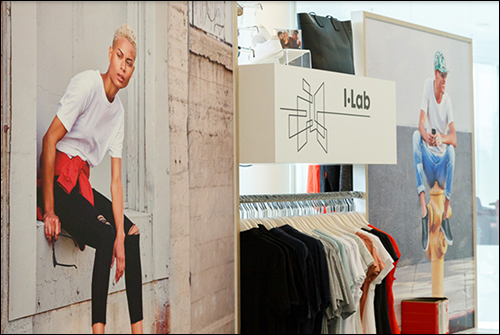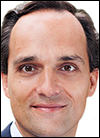May 03, 2017With the broadening role of the Internet of Things and radio frequency identification technologies in retail, as well as in the logistics, aviation and automotive sectors, global label manufacturer Avery Dennison has opened a lab to help support growth in these areas. Avery Dennison's I.Lab is an experience center at the company's European headquarters in Oegstgeest, Netherlands.
According to Avery Dennison, the I.Lab is intended to provide customers with hands-on experience using its intelligent labels for a variety of use cases in retail and beyond. It also aims to encourage companies to bring questions and innovation challenges to Avery Dennison.
The approximately 120-square-meter center consists of a display area simulating stores that sell food, apparel, cosmetics and accessories. It is located in the same building as one of Avery Dennison's materials laboratories, where the company also innovates based on the ideas and requests of partners and end users. It officially opened on Monday, Apr. 24.
Avery Dennison has been broadening its label portfolio, says Francisco Melo, the company's general manager and VP of global RFID for Avery's Retail Branding and Information Solutions division, in order to address more than traditional inventory accuracy via EPC ultrahigh-frequency (UHF) RFID labels. Increasingly, RFID labels are being used for more purposes than counting inventory, such as point-of-sale (POS) management, magic mirrors and electronic article surveillance (EAS). In addition, Near Field Communication (NFC) technology, 2D bar codes and wireless sensors are becoming part of the Internet of Things-based solutions companies are seeking.
The 120-square-meter lab is intended to help businesses understand the options available to them, based on Avery Dennison's existing technology, as well as to bring specific challenges or ideas for future innovations. That, Melo explains, could prove to benefit not only Avery Dennison, but also retail and other industries looking to solve problems with RFID or other IoT technologies.
"We've created a unique space," Melo says, "where we can allow companies to see the things that are available, while we can also change that space" as technology evolves. That means if customer or partner needs change, the displays and demonstrations at the center can work to accommodate customer needs.
The center features two main components: One area covers supply chain-based technology with a printing, encoding and tagging area for source tagging, as well as a tunnel and pallet or trolley fixed reader for logistics purposes. The second feature involves retail, including a store area to simulate the retail market for apparel and general merchandise.
The store area includes RFID-enabled EAS technology, a POS system, a handheld reader for stock-taking, a smart mirror and wide-area readers for hands-free inventory management. It also features a consumer-facing display that employs Avery Dennison's Janela solution, powered by the EVRYTHNG Smart Products Platform, to allow consumers to interact with products using their phone. In this scenario, they can employ NFC technology built into Android phones, or a 2D bar code as an alternative with any phone, to access data about a product, which can be enabled both for those shopping at a store, or for customers who have already brought a product home and want to continue engaging with it digitally.
The center will feature all of Avery Dennison's most recent portfolio of inlays, Melo says, and will utilize RFID readers from a variety of vendors. In some cases, he notes, businesses will require the testing of a system with a specific type of reader, which would vary from one company to another.
Avery Dennison expects to gain two benefits from the I.Lab, Melo reports. "We hope it will serve as a support to accelerate adoption in spaces where RFID is already growing," he says, such as retail apparel. Secondly, however, "We are hoping to encourage brands, retailers and companies to explore new spaces." That could include managing temperatures for the cold supply chain or supermarkets to prevent food waste, or tracking parts or baggage for the aviation sector. "We have technology that serves as a base enabler," Melo states. "We want to work very closely with companies to help them be as effective as they can."



